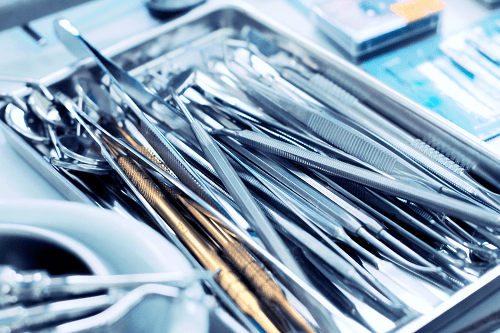The term “critical cleaning” refers to cleaning procedures that are critical in some way to the success of the end user. For example, aerospace solvents are formulated to perform cleaning operations on aerospace machinery. Solvents not designed for the needs of aerospace equipment could make a critical difference in how the machinery performs, causing problems that range from engine trouble to slippery surfaces that result from solvent residue.
When companies and organizations evaluate solvent options for critical cleaning, it’s important to choose precisely the right solvent for the job, even if it requires ordering a custom, toll blended solvent. If your outfit is in the process of evaluating solvent options for critical cleaning, below are six steps that can help you choose the right solvent(s).
- Soil Accumulation
The first step for evaluating solvent options is identifying the type of soil(s) you need to remove. Taking this step significantly narrows your search, but you could still have hundreds of options. Taking the next step produces a more manageable list of options.
- Cleaning Surface
Step two is defining the type of surface you need to clean. Here, it’s important to be as specific as possible. For example, let’s say you need to clean 300 Series stainless steel. As you examine options, narrow them down to cleaners formulated for this particular type of steel.
- Cleaning Method
Defining the cleaning method also narrows your search. Will you use an enclosed parts washer, or perform cleaning in open air? If you’ll clean in open air, do you need to apply cleaner using wipes, aerosol, pump action spray, etc.? After making the determination, it’s time for step four.
- Solvent Flashpoint
If you’ll perform open air cleaning in an area that has heat sources that could ignite liquids, choosing a high-flashpoint or a non-flammable solvent is the safest option. Remember that energized equipment can also serve as source of ignition. If you need to clean energized equipment, be sure to select a solvent that has a robust, dielectric formulation.
- Solvent Residue
Residue is another solvent characteristic to consider. Depending on its consistency, residue could pose several problems, such as enhancing or impeding current through electrical contacts, attracting dirt and grime to contacts, and creating slippery surfaces that could cause slip and fall injuries. In almost all cases, solvent residue is undesirable.
- HAP Content
A solvent that contains hazardous air pollutants (HAPs) may not damage the surface you clean, but it can damage the health of workers who do the cleaning. Avoiding HAP solvents is also a good idea because the Environmental Protection Agency (EPA) is likely to regulate them.
Contact Us About Solvent Options
When you evaluate solvent options for critical cleaning, it’s a good idea to speak with a solvent manufacturer that understands your needs. At Ecolink, we specialize in providing solvents for industrial cleaning operations that range from routine cleaning to critical cleaning that must be performed with a certain type of solvent using a specific procedure. In addition to supplying stock solvents, we also create custom solutions for unique needs.
To inquire about our products and services, call us today at (800) 563-1305 or fill out the contact form on our website. We look forward to helping you choose solvent options for critical cleaning.















